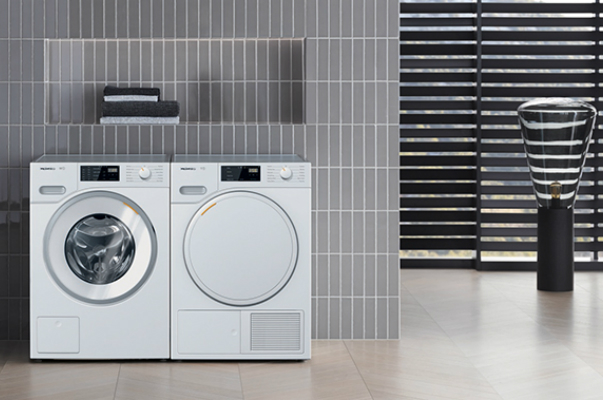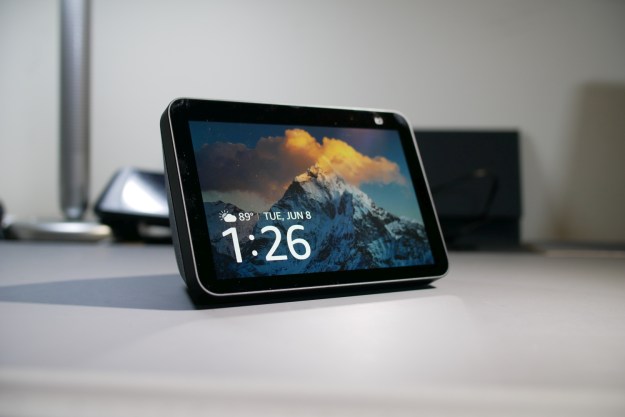While tech advances have given us all some impressive washing machine features, the core of the machine remains simple: Water is pumped in a big drum with cloths, the big drum spins around, and water is pumped back out. However, despite the simplicity, there are still things that can go wrong with even the best washers available.
- Your washing machine stops entirely between cycles
- Your washing machine has started making strange clunking noises
- Water has stopped draining from your washing machine
- The washing machine drum has stopped spinning or doesn’t spin reliably
- The washing machine door is stuck on lock
- The vibrations from the washing machine are causing problems
- The washing machine is starting to leak
- Your washing machine is starting to smell
Fortunately, there are plenty of DIY solutions that can help fix your washing machine, or at least narrow down the problem so you know just what to do next. Check our list of common washing machine problems for tips on what types of problems you can handle yourself, and what types of issues you should leave to the professionals.
Note: Mechanical troubleshooting requires that you unplug the washing machine for safety. It may be a good idea to place your washer in a position where you can easily plug and unplug your machine as you are testing.

Your washing machine stops entirely between cycles
If the washing machine is randomly shutting down or won’t stop at all, then you may have a power problem. Make sure the power cable is properly attached and plugged in. For newer washers, pay attention to any error codes that may pop up on the panel or app, and look at your owner’s manual to see what they may indicate.
Random shutdowns can also be caused by a faulty lid or door switch. Washing machines will automatically stop if they detect the lid has been opened, so a breaking or nearly detached lid switch can cause issues here. You can often see or feel the lid switch on your washer to tell if it’s damaged or not.
On the other hand, if your washing machine seems to be very deliberately stopping between cycles, or always at the same time after it’s started, that’s a sign it’s shutting down because it has been overloaded with too many clothes. Overloading is one of the most common washing machine problems, and it’s the cause of many of the issues we discuss in this guide. Never overload your washer, and respond to warning signs by decreasing the amount of clothing you’re putting in for each load.
Finally, old washers can develop problems with their motors and eventually burn out, which can also lead to shutdowns — this is a sign that it’s time to replace your washer.
Your washing machine has started making strange clunking noises
Some vibration is common for all washing machines, but if your washer is suddenly making clunking or screeching noises that it didn’t make before, it’s time for a closer look. This can often be caused by failing or rusted ball bearings that help move the drum or tub, or possibly by belts wearing out (this can depend on the construction of your washing machine). Some drums also have couplers that can break off with overuse and cause loud grinding noises.
With a little mechanical know-how, you can detach the back panel of your washing machine and take a closer look with a flashlight to spot any obvious damage, but a professional call may be in order.
If your washer uses an oscillator, also check to make sure nothing is blocking the oscillator, and that it remains in working condition. As always, keep in mind that overloading or unbalanced loads in the washing machine can also cause your washer to make strange noises.

Water has stopped draining from your washing machine
This is one of the most common washing machine problems, and the answer usually lies in the drain hose, which works with the drain pump to siphon water out of the washing machine drum when that part of the cycle is completed. Locate the drain hose (not to be confused with the fill hose), and check to see if there are any kinks that may be preventing water from escaping. If this looks fine, carefully unscrew the drain hose — and have a plan for what to do with any water that escapes.
Look for clogs around the entrance of the drain hose. This could be dirt, small clothing items like socks, balled-up lint, and many other things. You can also try spraying a jet of water down the house or using a wire to carefully search into the hose and see if you can break up a blockage. Sometimes, running an empty cycle on the hottest temperatures can also break up a clog, but this isn’t as reliable.
If you don’t see any signs of a clog or want to try something else first while the drum still has water in it, then we suggest checking your owner’s manual for an option to reset the washing machine — usually by turning it off at the power source — and see if this helps to solve the problem.
The washing machine drum has stopped spinning or doesn’t spin reliably
Here’s another classic problem that’s often caused by overloading the washing machine with too many clothes. Try downsizing the load and see if the washing spin will spin now. Sometimes, redistributing the laundry will help as well, especially if the washer stops spinning in mid-cycle.
This is also a situation where you should check the lid switch to make sure it’s functioning correctly and hasn’t unexpectedly stopped working. Additionally, if the drain pump has malfunctioned, the washing machine may stop spinning for safety purposes.
If you heard a loud noise before the washing machine stopped spinning, or it continued to grind until you turned it off, this indicates a problem with the belts or motor. That’s a good sign that a professional should take a look at the issue.

The washing machine door is stuck on lock
First, make sure your washing machine is fully powered down. Then check your manual or app for a reset option, which can often clear things up quickly. If the washing machine’s cycles are all finished, you may want to try quickly running a new cycle, which may reposition things enough for the washer to recognize that it can now unlock.
Some washing machines will refuse to open if a lot of water is still detected inside, which means you should consult the “washing machine won’t drain” problem we discussed above. When all else fails, call up manufacturer support or a local technician to help out.
The vibrations from the washing machine are causing problems
Is your washing machine vibrating off its stand, into the wall, or causing other problems? There’s not always a perfect fix for this, but there are several things you can try. Make sure the surface the washing machine is placed on is entirely level, clean, and free of any dirt or residues. Check your washing machine legs as well, and make sure they are positioned correctly. Many washer feet can be adjusted with a lock, although you’ll probably need some help to turn the washing machine over to adjust the feet.
If all of this looks fine, you probably have issues with an unbalanced load or overloading, which can be fixed by adjusting or removing clothing in the washer.

The washing machine is starting to leak
A washer leak is a bad discovery, and unfortunately, there are many different potential causes. If the washer is generally leaking during the wash cycle, that’s a sign that the fill hose could be leaking, or the water inlet valve may be broken or damaged. If the washer is primarily leaking in the spin cycle, that’s a sign that the drain hose or drain pump could be damaged or loose.
On the other hand, if the washing machine is clearly leaking from the front, that’s a sign the door seal may be worn and damaged, a problem older washers encounter. Sometimes simply adding too much detergent may cause the suds to leak out of the washing machine, which looks a lot more serious than it is since it’s not actually caused by an equipment malfunction.
However, frequently adding bleach to your washer is another potential culprit, as bleach can break down hoses, seals, and valves when used over time, creating leaks in many different areas.
It’s also possible, though less common, that the washer drum/tub has developed a seal hole or some type of damage that’s causing a permanent leak.
While it’s a good idea to open up the washer’s panel and look for any evident signs of damage to see what you can replace, there’s nothing wrong with contacting a professional to get a thorough diagnosis.
Your washing machine is starting to smell
This is a common yet annoying problem that can affect the way your clothes smell when they come out of the washer. There are a few potential causes. If your washing machine has an internal rubber liner or gasket, see if it’s removable. Often, a filmy residue can build up in this section and start harboring bacteria, which leads to bad smells. Thoroughly cleaning it at regular intervals can keep this problem from happening. Using a little less detergent may also stop these bacteria from forming quite so quickly.
You can also run high-temperature clean cycles from time to time to get rid of these bacteria patches. Many modern washers make it even easier by adding a clean mode for a cycle that’s designed to do exactly this.
Finally, it’s a good idea to leave your washing machine open for at least a little while after you take out the laundry. This gives it a better chance to dry out and stay smell-free.
Editors' Recommendations
- The most common Echo Show problems and how to fix them
- How to fix the most common Blink Mini 2 problems
- The most common Google Nest Mini problems and how to fix them
- Most common Amazon Echo Dot problems, and how to fix them
- Washing machines take a beating for Guinness World Record




